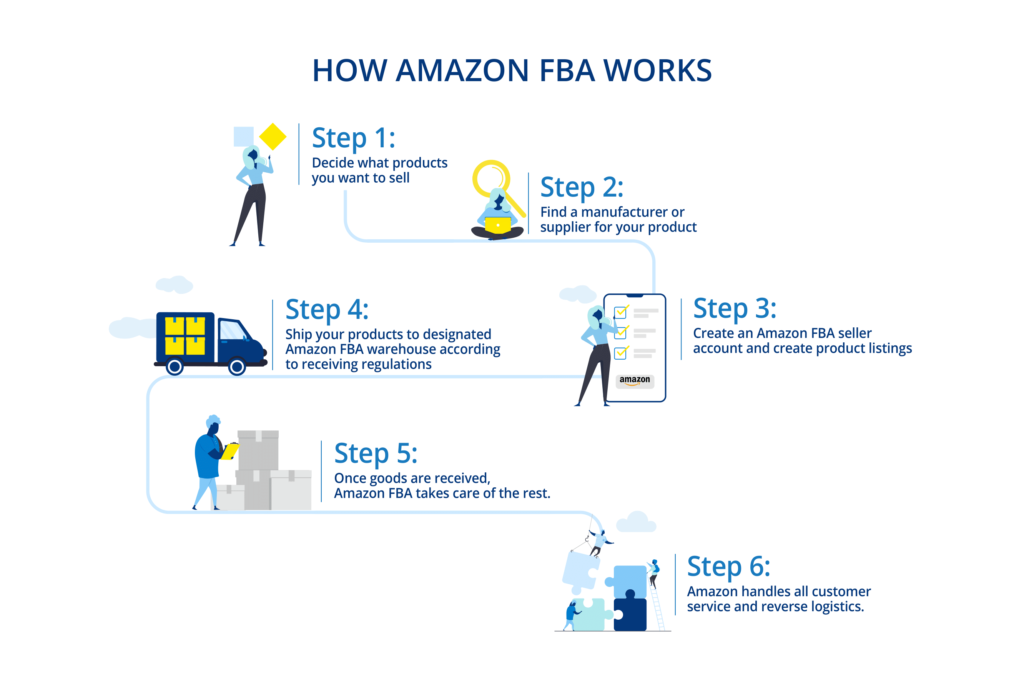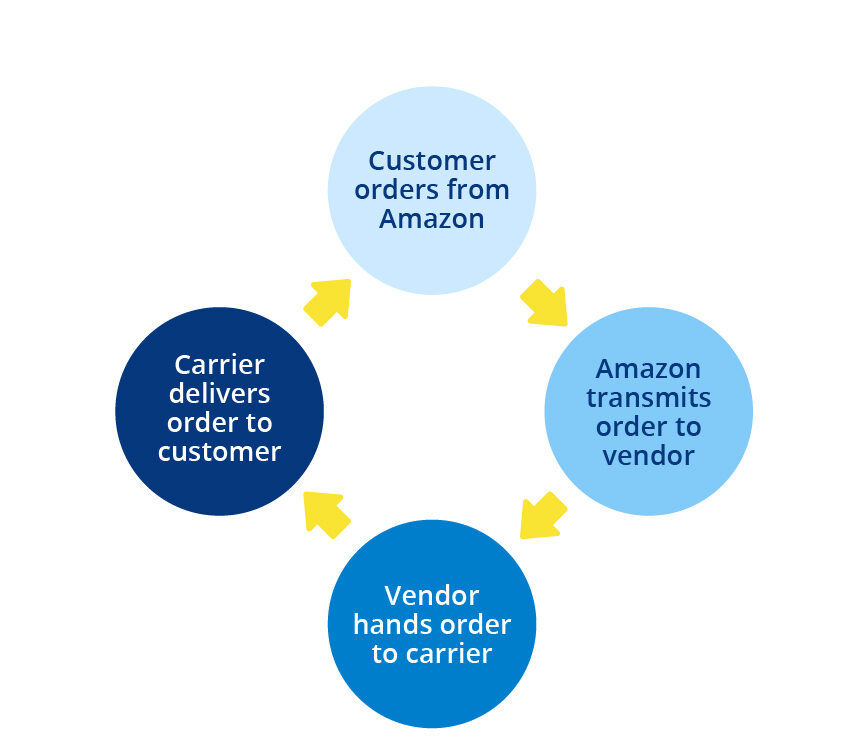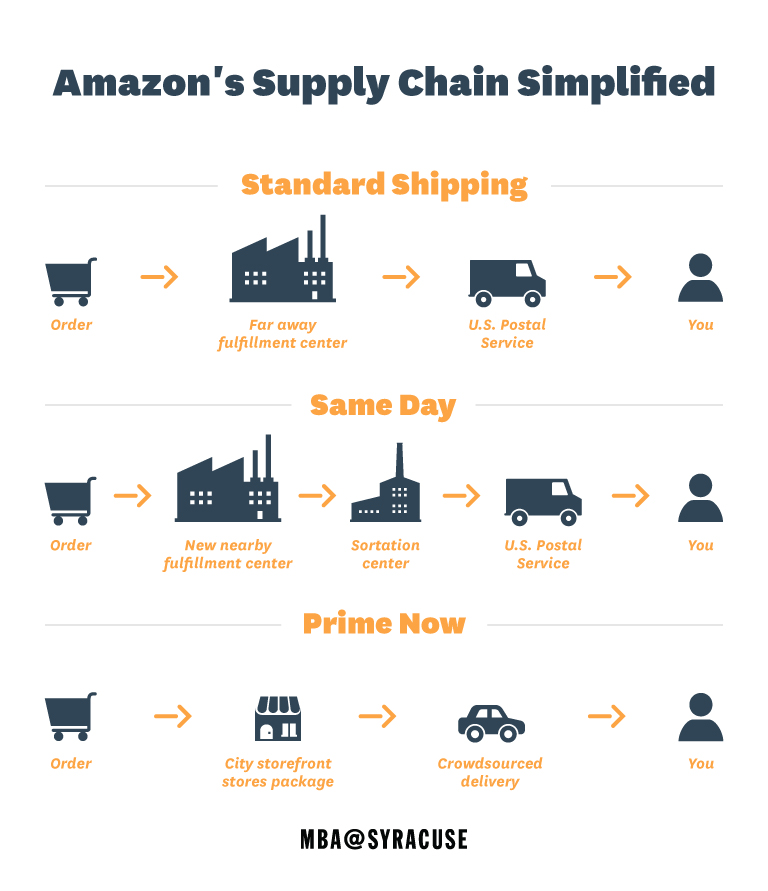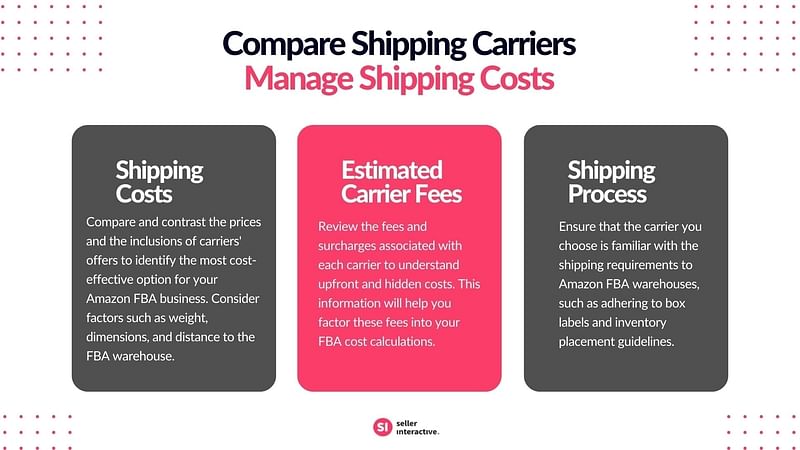Discover the secrets to simplifying your shipping process to Amazon FBA and boost your ecommerce success in no time!
Table of Contents
- Introduction: What is Amazon FBA?
- Understanding Amazon FBA Fees
- Preparing to Ship Products
- Choosing a Shipping Method
- Using Rapid Express Freight
- Launching Your Amazon FBA Business
- Maintaining Inventory Levels
- Navigating Amazon FBA Rules and Regulations
- Troubleshooting Common Shipping Issues
- Conclusion: Successful Shipping to Amazon FBA
- FAQs About Shipping to Amazon FBA
Introduction: What is Amazon FBA?
Amazon FBA, which stands for Fulfillment by Amazon, is a service offered by Amazon to help individuals and businesses sell their products online. Instead of storing, packing, and shipping items themselves, sellers can send their products to Amazon’s fulfillment centers, and Amazon takes care of the rest.
The Basics of Amazon FBA
When you decide to use Amazon FBA to sell your products, you first send your inventory to Amazon’s warehouses. Once your items arrive, Amazon stores them safely until a customer places an order. When someone buys one of your products, Amazon picks, packs, and ships the item to the customer on your behalf. This means you don’t have to worry about handling the shipping process.
Understanding Amazon FBA Fees
When using Amazon FBA, it’s essential to understand the various fees that may come your way. These fees are a crucial part of the selling process, and being aware of them can help you manage your expenses effectively.
Types of Fees
There are different types of fees associated with Amazon FBA that you should be familiar with. One common fee is the storage fee, which is charged based on the space your products occupy in Amazon’s fulfillment centers. Additionally, there are fulfillment fees, which cover the costs of picking, packing, and shipping your products to customers. It’s important to factor in these fees when pricing your items to ensure you make a profit.
Preparing to Ship Products
When you’re ready to send your products to an Amazon warehouse, there are a few key steps you need to take to ensure everything goes smoothly. Proper preparation is essential to avoid any hiccups along the way. Let’s dive into some tips on how to get your items ready for shipping to Amazon FBA.

Image courtesy of www.freightos.com via Google Images
Packing Tips
First and foremost, it’s crucial to pack your products securely to prevent any damage during transit. Make sure to use sturdy boxes or packaging materials that can withstand the journey to the warehouse. Bubble wrap, packing peanuts, and packing paper can all help cushion your items and keep them safe.
Additionally, be sure to label your packages clearly with the required information, including the Amazon FBA labels and any carrier labels. This will help ensure that your products are processed and received quickly upon arrival at the fulfillment center.
Organizing your inventory effectively before packing can also save you time and hassle. Group similar items together and create an inventory list to keep track of everything you’re sending. This can help streamline the packing process and avoid any mix-ups.
Choosing a Shipping Method
When it comes to sending your products to an Amazon fulfillment center, you have several options for shipping methods. It’s important to select the one that best fits your needs and budget. Let’s take a look at some of the carrier options available to you.
Carrier Options
One common choice for shipping products to Amazon FBA is using carriers like USPS, UPS, and Rapid Express Freight. Each carrier has its own set of services and pricing, so it’s essential to compare them before making a decision.
USPS, also known as the United States Postal Service, is a popular option for small businesses and individuals due to its cost-effective shipping rates. UPS, or United Parcel Service, is known for its reliability and wide range of services, making it a good choice for larger shipments.
Another option to consider is Rapid Express Freight, a shipping service that specializes in fast and reliable delivery. Rapid Express Freight can be a great solution for businesses looking to expedite their shipping process and ensure timely delivery of their products to Amazon FBA.
Using Rapid Express Freight
Rapid Express Freight is a shipping service that specializes in fast and reliable delivery of goods. They work with businesses to ensure that products are transported quickly and securely to their destination, like an Amazon FBA warehouse.

Image courtesy of www.freightos.com via Google Images
Advantages of Rapid Express Freight
When using Rapid Express Freight to ship your products to Amazon FBA, you can enjoy several benefits. Firstly, their expedited service can help get your items to the warehouse much faster than standard shipping methods. This can be crucial when you need to restock inventory quickly or fulfill customer orders promptly.
Additionally, Rapid Express Freight offers tracking options so you can keep an eye on your shipment’s progress every step of the way. This visibility can provide peace of mind and ensure that your products arrive at their intended destination without any issues.
Launching Your Amazon FBA Business
So you’ve decided to start your own Amazon FBA business, congrats! Let’s dive into the initial steps you need to take to get your products selling on Amazon.
Setting Up Your Account
The first thing you need to do is set up an Amazon Seller account. This account will give you access to the Amazon Seller Central platform where you can manage your inventory, sales, and customer interactions.
Listing Your Products
Once your account is set up, it’s time to list your products on Amazon for FBA. Make sure to create detailed and attractive product listings with high-quality images to attract potential buyers.
| Service | Description |
|---|---|
| Label Placement | Ensure labels are placed on correct locations on packages |
| Box Requirements | Use Amazon-approved boxes for shipment |
| Packing Materials | Use proper packing materials to protect products during transit |
| Required Labels | Include all necessary labels for Amazon FBA shipments |
| Shipping Methods | Choose appropriate shipping methods based on shipment size and weight |
By following these steps, you’ll be well on your way to launching your Amazon FBA business and reaching customers all over the world.
Maintaining Inventory Levels
When you start selling products through Amazon FBA, it’s crucial to keep a close eye on your inventory. Inventory management is the process of overseeing your stock levels and making sure you have enough products available to fulfill customer orders without running out or having excess items sitting in a warehouse.

Image courtesy of onlinegrad.syracuse.edu via Google Images
Inventory Management Practices
Here are some essential tips to help you maintain optimal inventory levels:
1. **Monitor Sales:** Keep track of your sales trends to predict when you might run out of stock. This data can help you plan for restocking ahead of time.
2. **Set Reorder Points:** Determine the minimum quantity of each product you want to have in stock before reordering. This way, you can avoid stockouts.
3. **Utilize Inventory Software:** Consider using inventory management software to streamline the process and automate tasks like reordering and tracking stock levels.
4. **Regularly Audit Inventory:** Conduct regular inventory counts to ensure accuracy and identify any discrepancies that need to be addressed.
By implementing these inventory management practices, you can avoid stockouts, reduce storage costs, and improve the overall efficiency of your Amazon FBA business.
Navigating Amazon FBA Rules and Regulations
When using Amazon’s FBA service, it’s important to understand and abide by the rules and regulations set forth by the platform. By following these guidelines, you can ensure a smooth and successful selling experience.
Amazon’s Policies
Amazon has specific policies in place to maintain a fair marketplace for all sellers. These policies cover a wide range of areas such as product listings, customer interactions, and shipping requirements. It’s crucial to familiarize yourself with these rules to avoid any violations that could result in penalties or account suspension.
Make sure to review Amazon’s Seller Central regularly to stay up to date on any changes or additions to their policies. By staying informed, you can proactively address any issues that may arise and maintain compliance with Amazon’s guidelines.
By understanding and adhering to Amazon’s rules and regulations, you can set yourself up for success as an FBA seller and build a reputable business on the platform.
Troubleshooting Common Shipping Issues
Shipping delays can happen for various reasons like inclement weather, carrier issues, or high shipping volumes. If your package is delayed, the first step is to track it online using the tracking number provided by the carrier. Contact the carrier directly to inquire about the status of your shipment and for any updates on the delivery timeframe. Sometimes delays can be resolved quickly with a simple phone call.

Image courtesy of sellerinteractive.com via Google Images
Damaged Inventory
Receiving damaged inventory can be frustrating, but there are steps you can take to address the issue. When you receive a damaged product, document the damage with photos and contact the carrier immediately. They will guide you on the process for filing a claim. It’s crucial to act swiftly to ensure you can get a refund or replacement for the damaged item.
Conclusion: Successful Shipping to Amazon FBA
After learning about the ins and outs of shipping to Amazon FBA, you are now equipped with the knowledge to streamline your selling process and grow your online business. By following the tips and guidelines outlined in this article, you can successfully navigate the world of Amazon FBA and maximize your selling potential.
Remember, efficient packing, choosing the right shipping method, and even considering services like Rapid Express Freight can all contribute to a smooth shipping experience to Amazon FBA. Additionally, maintaining inventory levels and abiding by Amazon’s rules and regulations are crucial for sustaining your business in the long run.
By staying informed, proactive, and adaptable to any challenges that may arise, you can establish a thriving Amazon FBA business that meets the needs of your customers and helps you achieve your selling goals. Take the necessary steps to set up your account, list your products, and stay on top of inventory management to ensure a successful journey with Amazon FBA.
With these tools and insights at your disposal, you are well on your way to becoming a successful Amazon FBA seller. Keep learning, exploring, and refining your strategies to stay ahead in the competitive world of e-commerce. Best of luck in your Amazon FBA endeavors!
FAQs About Shipping to Amazon FBA
How much does shipping to Amazon FBA cost?
Shipping costs to Amazon FBA can vary depending on the size and weight of your products, as well as the shipping method you choose. Typically, you will need to factor in the cost of packaging materials, carrier fees, and any additional services you may require.
Can I ship products myself to Amazon FBA?
Yes, as a seller on Amazon FBA, you have the option to handle the shipping logistics yourself. However, using Amazon’s partnered carriers or services like Rapid Express Freight can often save time and ensure a smoother process. It’s essential to consider factors like speed, reliability, and cost-effectiveness when deciding on a shipping method.
What happens if my inventory gets lost in transit?
If your inventory gets lost in transit while shipping to Amazon FBA, don’t worry. Amazon has protocols in place to handle lost shipments. You can file a claim with the carrier you used for shipping to initiate an investigation. Additionally, Amazon’s seller support team is available to assist you in resolving any issues and ensuring that your inventory is properly accounted for.
